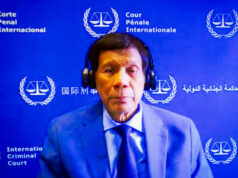Factory activity picks up despite inflation
By Elijah Joseph C. Tubayan
Reporter
FACTORY ACTIVITY in the Philippines improved last month despite higher input costs due to the tax reform law that took effect in January, according to a monthly survey IHS Markit conducted for Nikkei, Inc.
But while the improvement moved the Philippines up in this regard among monitored Association of Southeast Asian Nations (ASEAN) members, it was still not enough to enable the country to regain its previous lead in the region.
The Philippines’ Nikkei Manufacturing Purchasing Managers’ Index (PMI) logged 51.5 in March from 50.8 in February due to faster output, new order, and export growth, beating tracked ASEAN members’ 50.1 average.
The Philippines’ manufacturing sector placed third among the seven tracked ASEAN members — an improvement from fifth place in February — but still fell behind Myanmar and Vietnam with 53.7 and 51.6, respectively.
The manufacturing PMI consists of five sub-indices, with new orders having the biggest weight at 30%, followed by output (25%), employment (20%), suppliers’ delivery times (15%) and stocks of purchases (10%). A PMI reading above 50 suggests improvement in business conditions, while a score below that signals deterioration.

The Philippine reading in March signaled “further improvement in the health of the sector,” report read, with rate of output growth picking up for a second straight month despite remaining “modest overall.”
“Survey respondents cited higher client demand, increased sales and expanded production capacity as reasons for greater output,” the report said, noting that “adverse effects on demand from recent tax reforms showed signs of fading.”
Republic Act No. 10963, or the Tax Reform for Acceleration and Inclusion (TRAIN) law that took effect on Jan. 1, reduced personal income, estate and donors tax rates, but removed some value-added tax exemptions; hiked excise tax rates for automobiles, minerals, tobacco and fuel; as well as imposed new excise levies on sugar-sweetened beverages and cosmetic procedures.
“Inflation remained strongest in the Philippines as new excise taxes worked their way through to higher input prices,” the report read, noting that “the rate of increase in both input costs and selling prices climbed to the highest in the survey history.”
“Increased global prices for raw materials, in particular steel, chemicals, paper and sugar, as well as a weaker exchange rate also contributed to inflation.”
On the other hand, March saw a “slower fall in employment” even as it was the second straight month of decline, while business confidence was at “an eight-month high”.
“This encouraged firms to scale up purchasing activity and build up inventories.”
Moreover, foreign demand for Philippine goods increased in March after declines experienced in 2018’s first two months, with the improvement being “the fastest since December 2016”.
“However, there were some reports of higher selling prices eroding competitiveness.”
The report quoted Bernard Aw, IHS Markit principal economist, as saying that “the rise in the headline index points to signs that the adverse impact on demand from the new excise taxes could be fading.”
Despite the Philippines’ improvement in March, the country’s average PMI reading for the 2018’s first three months of 2018 was the lowest since the survey’s inception in January 2016.
Michael L. Ricafort, Rizal Commercial Banking Corp. economist, attributed improving demand partly to TRAIN’s personal income tax cut which “effectively increased the incomes and purchasing power of consumers.”
“Consumer spending accounts for nearly 70% of the Philippine economy. Consumer-related manufacturing industries may have benefitted directly from increased consumer incomes and spending,” he said in an e-mail.
Guian Angelo S. Dumalagan, market economist at the Land Bank of the Philippines, said “it remains to be seen, however, if this recent gain will be sustained considering that inflation could rise further until it peaks in the third quarter of 2018.”



